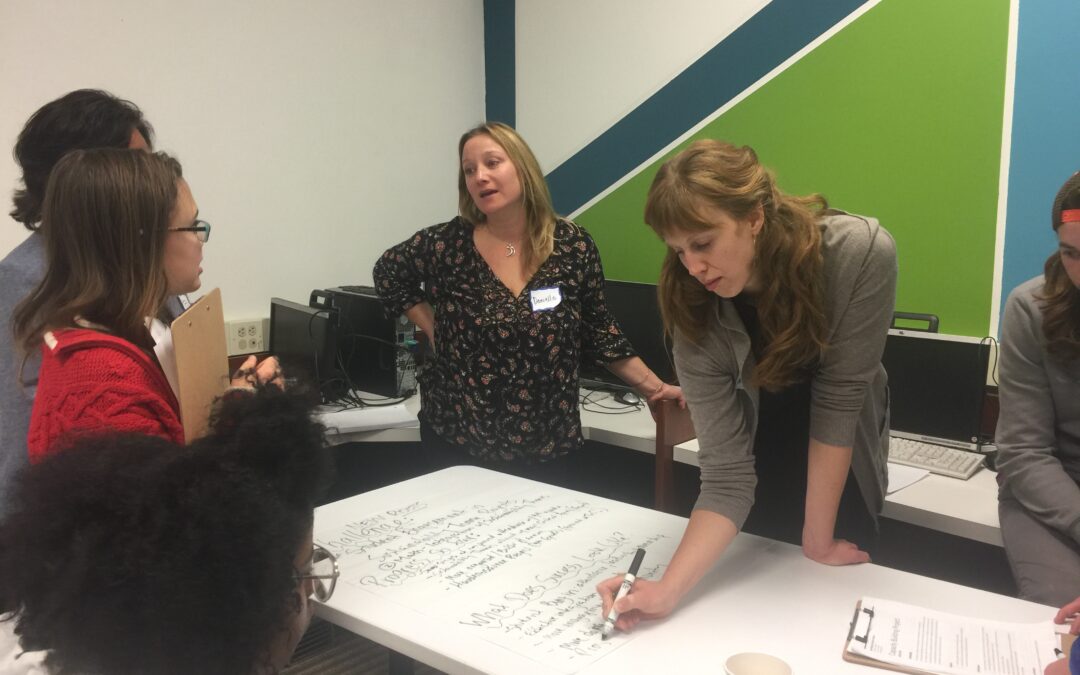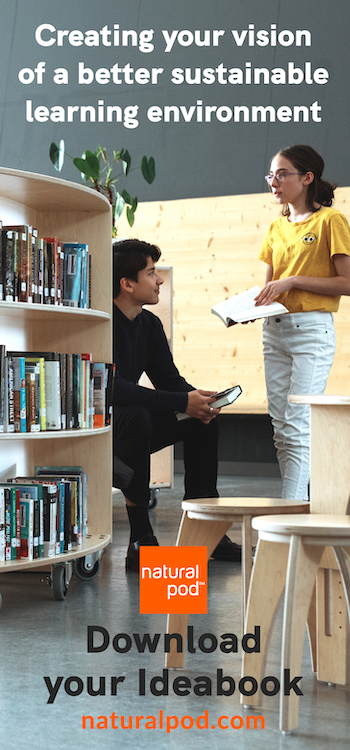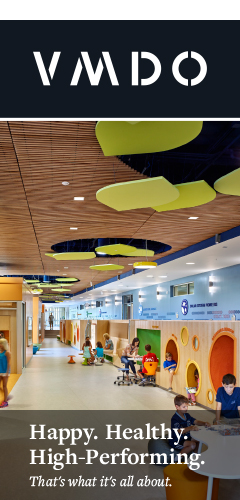Tina Nilsen-Hodges, Founder / Principal and Superintendent, New Roots Charter School (Ithaca, New York)
Throughout the upcoming months, we will be running a Q&A blog series that features GSNN partners describing best practices and lessons learned on topics tied to each of the impact systems in the GreenPrint. Q&As for January and February focus on the Leadership system.
This is the first blog in the series.
Discuss how visionary leadership has shaped the evolution of New Roots Charter School since its founding.
Visionary leadership planted and nourished the seeds that have “grown New Roots” since its inception in 2009. Inspired by the call of the U.N. Decade of Education for Sustainable Development (2005-2014), New Roots Charter School is a whole-school model of secondary education for sustainability, with the vision of empowering youth to learn actively, think critically, and solve problems creatively and collaboratively, developing the knowledge and skills to redesign our communities for social, economic, and ecological sustainability.
The paradigm shift from the practices of a 20th-century educational system designed to prepare young people to enter the corporate, industrial economy to an ecological approach to education emphasizing health, equity, and sustainability requires that adults and students alike are inspired to embrace change. Change is hard, and people often need help closing the gap between their expressed values and their habitual ways of thinking and behaving. Leading a change of this magnitude requires sustained, visionary leadership over time. To develop personal and cultural practices in alignment with their shared values, people need visionary leadership that is inspiring and practical, keeping the vision alive, validating the challenges, and celebrating the successes while illuminating the way forward.
Visionary leadership is a practice, not a person, and it needs to be a shared and sustained practice to be effective. As our Dean of Students Jhakeem Haltom often says, “repetition is the mother of revelation.” Jhakeem has been a leader in supporting staff and students in keeping the vision alive in our daily discourse through simple and memorable ways of expressing our shared values. This empowers others to recognize, embrace, and reinforce the core values of a just and sustainable community as they are expressed throughout our school culture and curriculum.
In these times more than ever, we see how essential the paradigm shift to an ecological approach to education emphasizing health, equity, and sustainability truly is. We draw our inspiration for enduring visionary leadership that cultivates and sustains a culture based on these values from the Gayogo̱hó꞉nǫʼ (Cayuga Nation) and the Haudenosaunee Confederacy, whose enduring stewardship of their territory, the land where we live and work, shows us how to live in good relationship to the Earth and with each other.
Describe how New Roots leaders embody health, equity, and sustainability in their actions and behaviors. How do they serve as role models for the rest of the New Roots community?
Like most public schools, as a legal entity, New Roots has a traditional organizational hierarchy, with one “school leader” at the top. Expressing our values through practice, we seek as an organization to function like an ecosystem in our daily practice, with leadership teams who create a web of connections and communication flow that models health, equity, and sustainability.
Our “ecosystem” at New Roots has many leaders, from students who serve as facilitators of our Student Council, to our faculty leaders, our administrative leaders, and our Board of Trustees. There are many models of how to fully live into our values in daily practice close at hand! Leaders in our community are the people sitting next to you at the lunch table enjoying farm-fresh veggies. They are Student Council members facilitating dialogue and shared decision-making. They are teachers designing lessons that take students out of the classroom and into their community and the natural world. They are operational leaders who put structures in place for recycling and composting and teach us to use them by patiently giving feedback on our practice. The shared values expressed in the language school leaders use to talk about these everyday experiences strengthens our connections and our shared understanding of how our values can be expressed, and why that matters.
Why is shared leadership important for advancing health, equity, and sustainability at New Roots?
Shared leadership is at the heart of our ecosystem approach to organizational thinking at New Roots and is the key to expressing these core values throughout our organizational ecosystem. It’s essential for people to see that those they interact with express these values and that these values are reflected in their behavior. One leader alone cannot possibly provide the modeling and system-wide support necessary for all members of the community to truly understand and embrace what it means to practice health, equity, and sustainability in all that we do.
Describe some practices you have in place that create the conditions for shared leadership at New Roots.
At New Roots, dynamic governance practices are at the heart of a healthy school culture that values the voice and perspective of every person. Dynamic governance is inspired by natural systems, in which complex organizations work as decentralized, nested systems that are semi-autonomous. School leaders at all levels are trained to use the clear, well-defined processes of dynamic governance, which create the conditions for shared decision-making in which all voices are heard and valued, and people have the opportunity to contribute to decisions that impact their school experience. Our nested system is designed to create ways for information to flow so that leadership in all spheres can draw on the insights of the larger group, connecting students, teachers, administrators, and trustees in a manner that creates understanding, transparency, and trust throughout the system.
What are some best practices that you use to seek multiple and diverse perspectives from the New Roots community?
Our ecosystem model organizes students, faculty, and administrators into teams of a dozen or so people who meet regularly to discuss issues impacting their experience and make decisions about issues related to their delegated responsibilities. For example, each student advisory group elects a Student Council representative. Council representatives facilitate regular advisory group discussions to hear student ideas and concerns, using the technique of “rounds” to ensure that all voices are heard. Each representative reports what they heard from their advisory group to the Student Council, which responds by developing a responsive action plan that works in concert with staff leaders. Practices like these at all levels, along with forums such as our Family Action Committee and open Community Conversations at board meetings, provide regular opportunities for multiple and diverse perspectives to inform school decisions.




